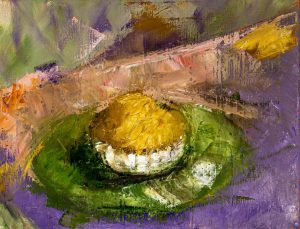01 Jun Content is a Glimpse

The British art critic David Sylvester asked AbEx painter Willem de Kooning in 1960 whether painted forms should be recognizable.
De Kooning replied that painted forms “ought to have an emotion of a concrete experience.”
Today we’d more likely say that painted forms should convey how they feel in the moment.
If that seems solipsistic, it’s not; it’s realistic.
 If you crave something outside realism, look to advertising photography, not painting.
If you crave something outside realism, look to advertising photography, not painting.
“I am very happy to see that grass is green,” de Kooning went on to tell Sylvester. “At one time, it was very daring to make a figure red or blue. I think now it is just as daring to make it flesh-colored.”
What de Kooning meant was that the world enjoys a primacy. Rightly or wrongly, we take it as the case. The world is a vast public domain, filled to the brim with identifiable content that we share.
“I will never know how you see red and you will never know how I see it,” philosopher Maurice Merleau-Ponty said. “But this separation of consciousness is recognized only after a failure of communication, and our first movement is to believe in an undivided being between us.”
The content we share, moreover, is episodic—and always takes us by surprise.
“Content is a glimpse of something, an encounter, like a flash,” de Kooning told Sylvester. “I have it now from some fleeting thing—like when one passes something, and it makes an impression.”
The content we share is never a tidy package.
Paintings of it shouldn’t be, either.
Above: Amish Muffin by Robert Francis James. Oil on canvas. 21 x 18 inches. Available. Corn Muffin by P. Johnson. Photograph.
